|
The base before rehabilitation
|
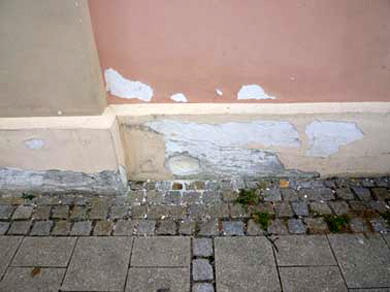 |
>
Taken in autumn 2012 |
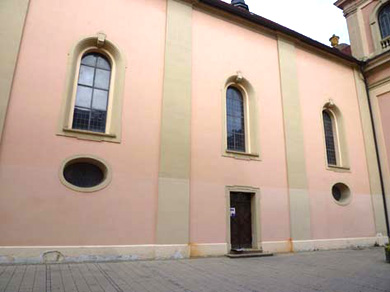 |
|
The masonry has been stripped and cleaned
|
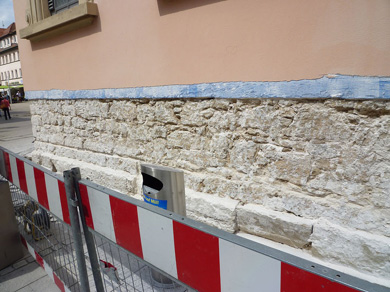 |
|
The plaster lath is applied
|
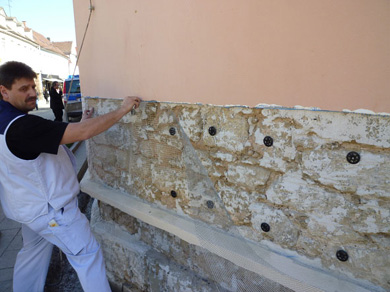 |
|
The bonding coarse plaster has been applied
|
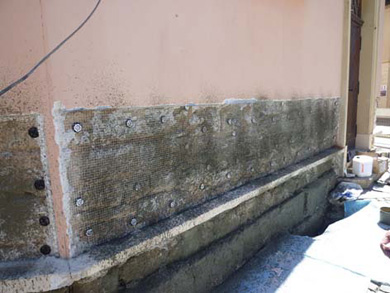 |
|
Sealing and waterproof plaster coated with two layers of the flexible sealing slurry epasit MineralDicht flex up to 15 cm above the
ground level
|
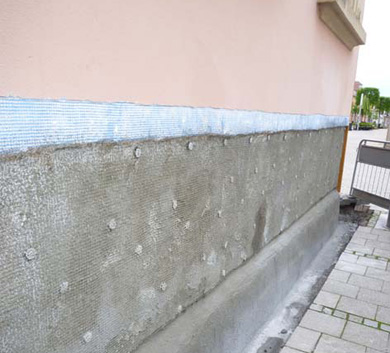 |
|
|
Application of the renovation plaster
|
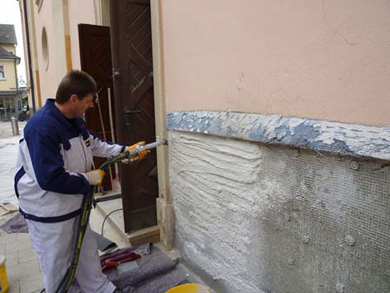 |
|
|
The whole base area is coated with renovation plaster
|
|
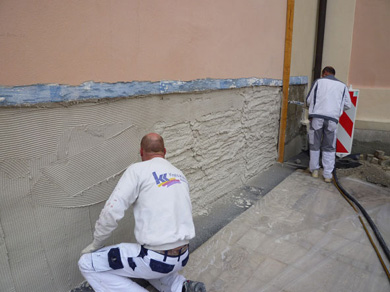
|
|
The renovation plaster has been applied
|
 |
|
Before painting the surface is coated with fine rehabilitation slurry.
|
 |
|
The base rehabilitation is finished.
|
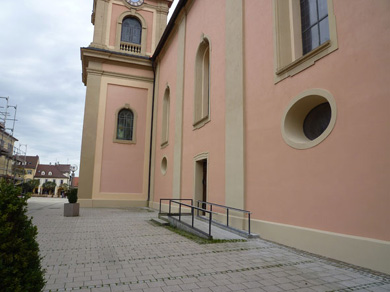 |
|
After the rehabilitation Ludwigsburg's crowning glory
looks lovely again
|
 |
|
|
Ludwigsburg town church rehabilitated with epasit
 The only Protestant church in Baden-Württemberg, Ludwigsburg town church was constructed in a baroque style. The foundation stone was laid in summer 1718. Around 300 years later, moisture and salination had seriously damaged the building. In 2013, the base area was sealed and rehabilitated with the WTA certified renovation plaster system from epasit.
The only Protestant church in Baden-Württemberg, Ludwigsburg town church was constructed in a baroque style. The foundation stone was laid in summer 1718. Around 300 years later, moisture and salination had seriously damaged the building. In 2013, the base area was sealed and rehabilitated with the WTA certified renovation plaster system from epasit.
Preliminary examinations: masonry in the laboratory

The rehabilitation was supervised and technically supported by Daniel Schlichenmaier and Jürgen Kurz, both from epasit Spezialbaustoffe GmbH. In autumn 2012, they both visited the site together with the architect in charge, Helmut Wallmersperger from MW Architekten GmbH, Ludwigsburg. They took specimens at the three sides of the building which showed signs of damages. These specimens were tested for their degree of salination in the epasit laboratory according to WTA specifications 2-9-04/D. On the north side, above all, the masonry showed heavily increased nitrate values as well as a relatively high quantity of chloride and sulphate.
First steps on the base area

The old plaster was completely removed up to a height of approx. 180 cm and the stripped area was then cleaned using a dry blasting. Sandstone rubble masonry appeared. Because of the stresses on the substrate and the thick plaster layer to be expected, the masons attached lathing. A partial coat of the bonding coarse plaster epasit MineralSanoPro hb was applied with the help of a render spray gun to allow salts and humidity present in the masonry to escape.
Rehabilitation of the church base:
from thin to thick

When the bonding coarse plaster was sufficiently set, the renovation plaster epasit MineralSanoPro lpf was applied with a minimum thickness of 30 mm. Before that, hollows, bumps and joints were levelled with the same material. The plaster was applied mechanically in several layers, one a day. On the top plaster layer the masons from the Krehl-Kalesse company applied the coarse rehabilitation slurry epasit seg with lath while the fine rehabilitation slurry epasit sef was used as the actual topcoat. The plaster was finished with silicate paint. 'The components of the renovation plaster system we used harmonize well and can be processed easily', the painter Ulrich Krehl-Kalesse from Ludwigsburg said.
Sealing with waterproof plaster

Where the masonry touched the earth it was stripped all around. After cleaning, the substrate was stable. A full coat of the bonding coarse plaster epasit MineralSanoPro hb was applied up to a height of 15 cm above the ground. After the scratch coat had hardened, the masons were able toplaster the surface with epasit MineralDicht sperr. This waterproof plaster was applied with a minimum thickness of 15 mm, and after hardening a double of the flexible sealing slurry epasit MineralDicht flex was applied to safely protect the church foundation from moisture coming from the ground. Daniel Schlichenmaier, who supervised the construction measures for epasit, is delighted at a job well done: 'Everyone cooperated really effectively, a fact which is also reflected in the quality of the rehabilitation'.
epasit: Solutions for building
materials from a single source.

For more than 50 years, the epasit GmbH develops and produces special building materials for rehabilitation, renovation and modernization. The product range comprises, among other things, the waterproofing of buildings, the rehabilitation of monuments and old buildings as well as the rehabilitation of damages caused by mould and moisture. Drinking water tanks or swimming pools, too, are rehabilitated with products from epasit. With sought after inventions for building protection and building rehabilitation, the family company distinguishes itself as a think tank. In addition to thousandfold proved standard products, epasit develops individual solution for its customers.
Presscontact:
 epasit GmbH Spezialbaustoffe
epasit GmbH Spezialbaustoffe
Peggy Wandel
Sandweg 12 - 14, D-72119 Ammerbuch-Altingen,
Tel +49 (0) 7032 2015-0, Fax +49 (0) 7032 2015-21
e-Mail: presse@epasit.de
|
|
|

Contact us

Do you have questions and need
a personal contact?
Phone +49
(0)7032 - 20 15-0
Project management

Daniel Schlichenmaier

If you have further questions regarding this object or a similar problem, please contact us.
Contact us

e-Mail: daniel.schlichenmaier@epasit.de
Phone: +49 (0)7151-209 430
Mobil: +49 (0)160-7850481
|
|


